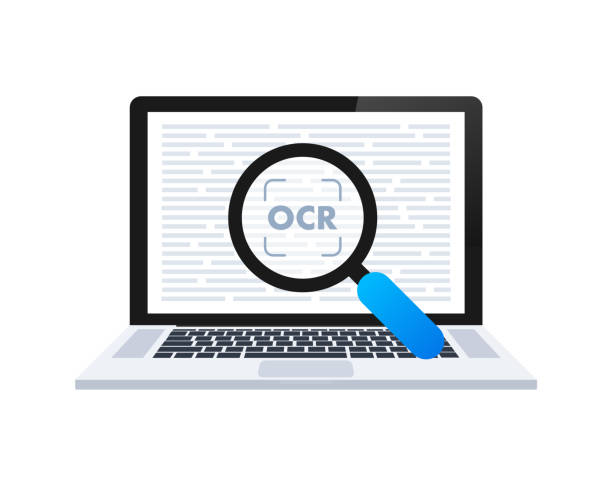Character Recognition (OCR) has unleashed a new era in processing and digitizing textual content found in images and documents. By bidding farewell to the monotonous chore of manual data entry, OCR has unlocked a treasure trove of saved time and resources. You might be wondering, what is the magical force propelling OCR ,ICR to such extraordinary heights? The key to unlocking its astounding potential lies within the realm of Artificial Intelligence (AI).
The Role of Artificial Intelligence in OCR
AI plays a critical role in modern OCR systems, allowing them to understand and process text with unparalleled accuracy and speed. Furthermore, by leveraging machine learning algorithms and advanced data extraction techniques, AI-driven OCR tools outperform traditional methods in almost every aspect.
OCR Machine Learning
Firstly, machine learning is a subset of AI that involves training algorithms to recognize patterns and make decisions based on the data they process. Moreover, in the context of OCR, machine learning models are fed vast amounts of data to learn how to recognize text characters, fonts, and layouts, ultimately enabling them to extract information from a wide range of document types.
Top Online OCR Solutions
With numerous OCR solutions available, it’s essential to choose the right tool for your needs. Here are some key features to consider when selecting an OCR solution:
OCR Recognition
A top-notch OCR tool should provide high recognition accuracy, even for low-quality or distorted images. It should also support multiple languages and character sets to cater to diverse user needs.
Document Data Extraction
Effective OCR tools can extract information from various document types, such as invoices, receipts, or forms, and export them into structured formats like CSV or Excel for further processing.
Benefits of Online OCR Reader
AI-driven OCR tools offer a myriad of benefits, including:
Improved Accuracy
Thanks to machine learning, modern OCR tools can recognize and process text with exceptional accuracy, reducing the need for manual corrections and ensuring high-quality results.
Enhanced Speed
AI-powered OCR solutions can process large volumes of documents in a fraction of the time compared to manual data entry. Moreover, it significantly improves efficiency and productivity.
Seamless Integration
Lastly, Online OCR tools often provide APIs and integration options, allowing users to incorporate OCR capabilities into their existing workflows, software, or apps with ease.
Common Applications of OCR Text Recognition
OCR technology has far-reaching implications across various industries, such as:
Business and Finance
Firstly, OCR tools help companies automate invoice processing, data extraction from financial documents, and streamlining bookkeeping tasks.
Education and Research
Secondly, OCR solutions enable researchers and students to digitize books, articles, and other printed materials for easy access, analysis, and collaboration.
Healthcare
OCR technology is used to extract patient information from medical records. It also automates insurance claim processing and facilitates the digitization of health records.
Real-World Applications of OCR Solutions
Apart from the previously mentioned industries, OCR technology is also applicable in other sectors:
Legal Industry
OCR tools are invaluable for legal professionals. It helps in digitizing large volumes of legal documents, contracts, and case files. Furthermore, by converting these documents into searchable and editable formats, attorneys can easily access critical information and streamline their workflows.
Media and Entertainment
OCR solutions assist in extracting text from movie subtitles, closed captions, or scripts, facilitating translation, editing, and adaptation for different platforms or languages.
Government and Public Sector
OCR technology enables government agencies to digitize and archive essential records, historical documents, and forms. This facilitates efficient information retrieval, enhances transparency, and supports the preservation of valuable resources.
Retail and E-commerce
Lastly, OCR tools aid retailers in automating data extraction from product labels, packaging, or invoices. It allows them to update their inventory, track shipments, and manage orders more efficiently.
Tips for Optimizing OCR Performance
To ensure the best results when using OCR tools, consider the following tips:
- Image Quality: High-quality images yield better OCR results. Ensure the scanned documents or photos are clear, well-lit, and have a high resolution.
- Pre-processing: Apply image pre-processing techniques like deskewing, despeckling, or binarization to improve the readability of the text and increase recognition accuracy.
- Font Selection: Use standard, easy-to-read fonts for the best OCR performance. Complex or decorative fonts may reduce recognition accuracy.
- Training: If your OCR tool supports custom training, you can further improve its accuracy by feeding it domain-specific data or documents with unique layouts and fonts.
you can unlock the full potential of AI-powered OCR solutions and reap the benefits across various industries.
Conclusion
Lastly, the might of Artificial Intelligence has revolutionized OCR solutions, bestowing upon them unmatched text recognition prowess, lightning-fast processing, and pinpoint accuracy. The unraveling the indispensable features make an OCR tool truly remarkable and acknowledging. Furthermore, the array of advantages and real-world applications, you can seize this avant-garde technology to refine your workflows and elevate your efficiency to unprecedented heights.





Be First to Comment